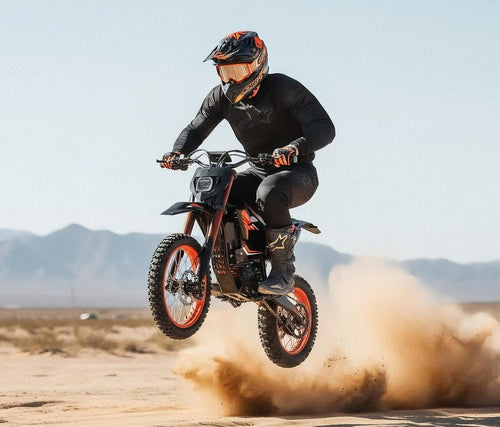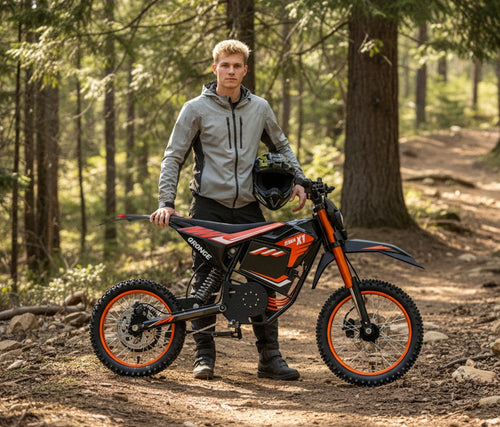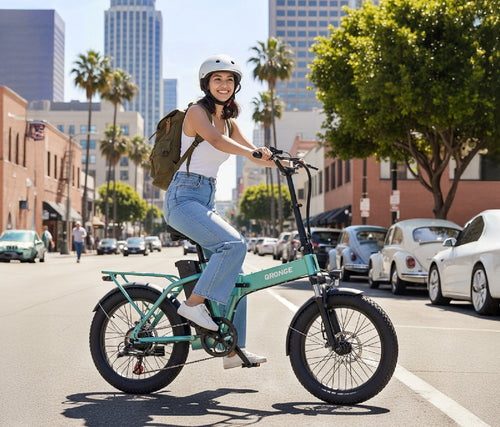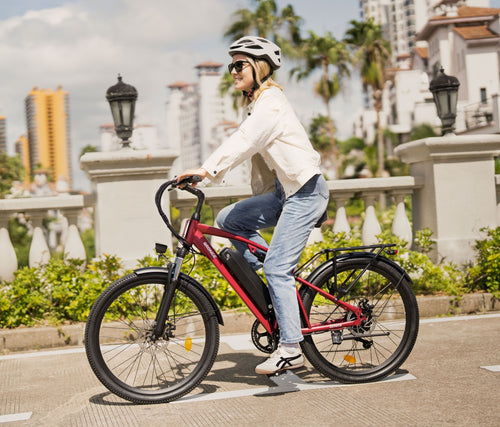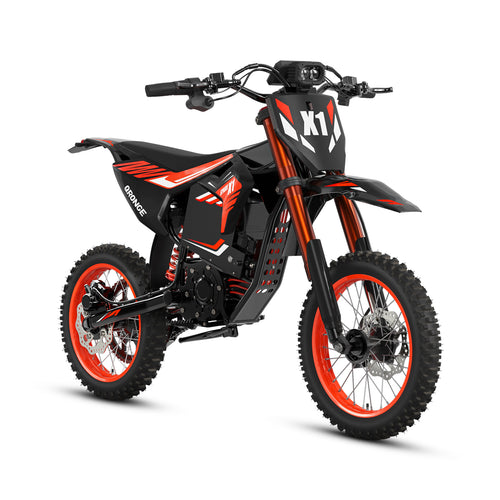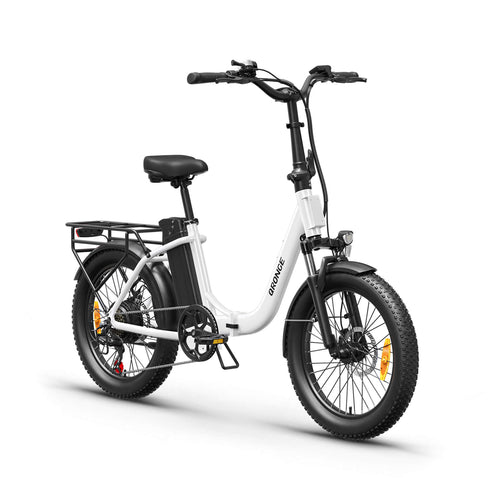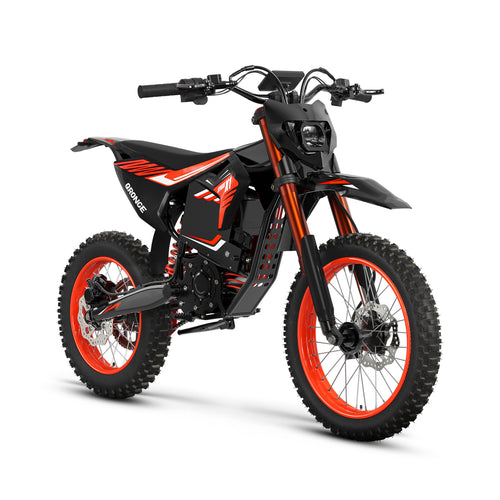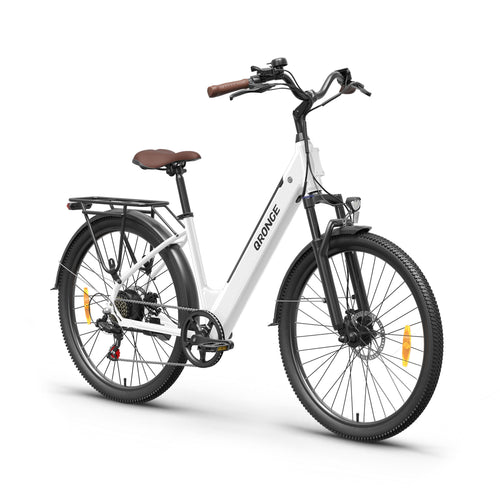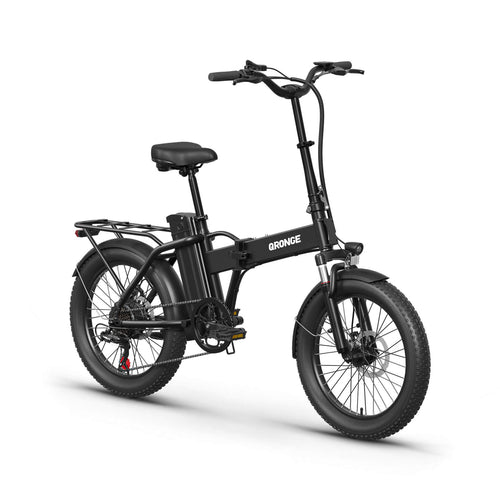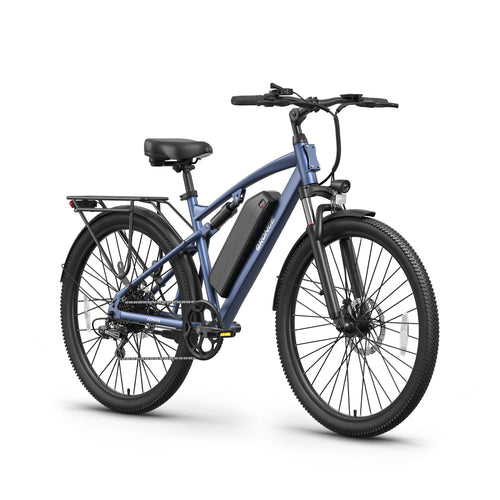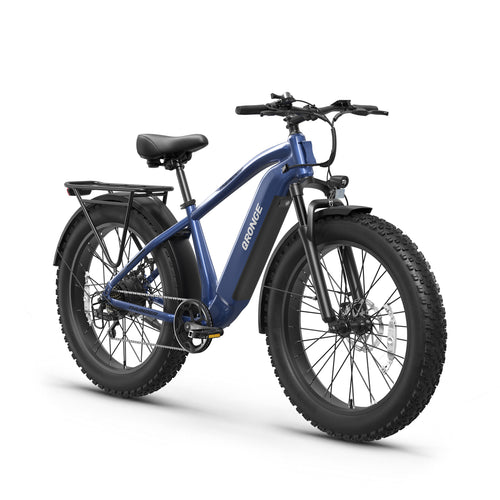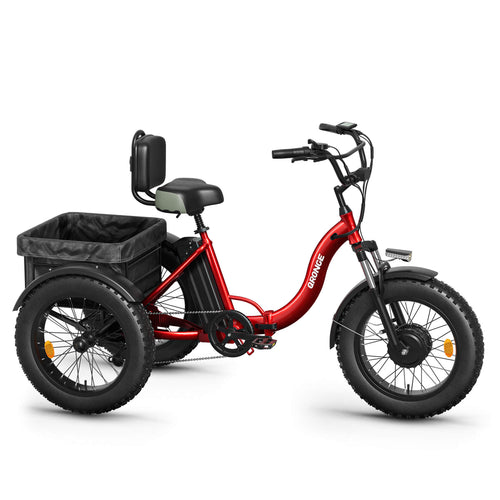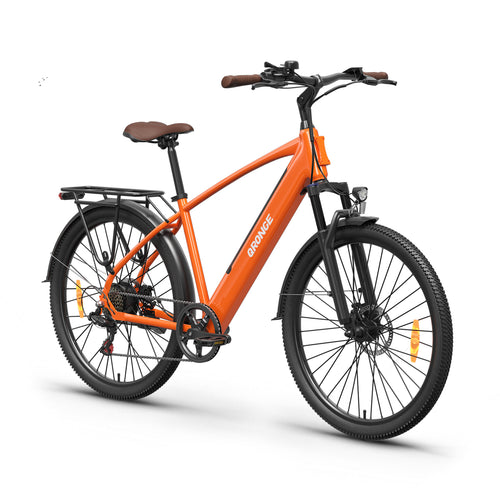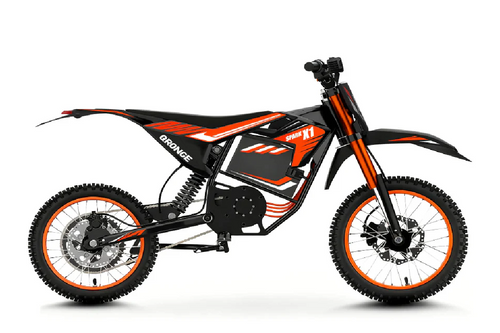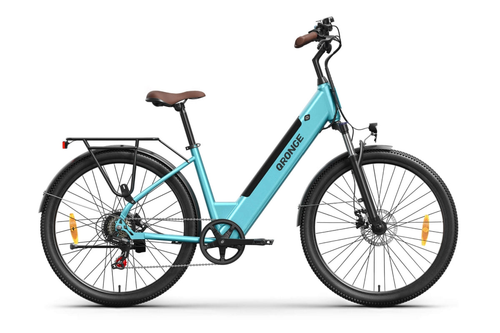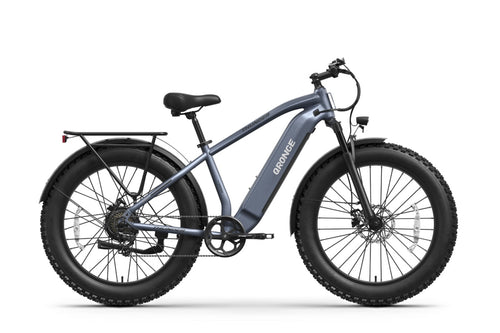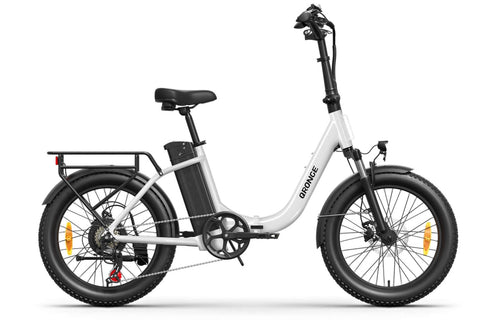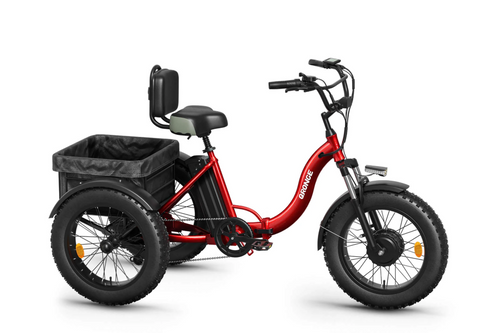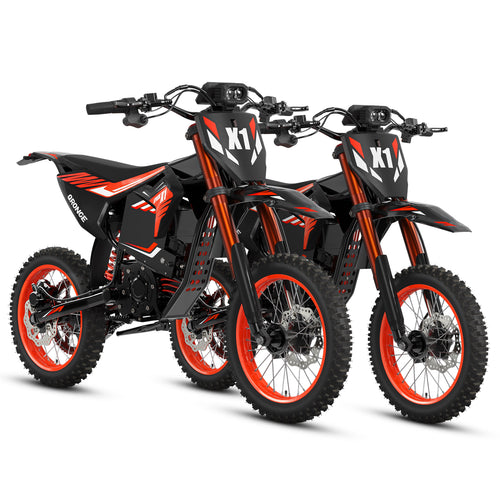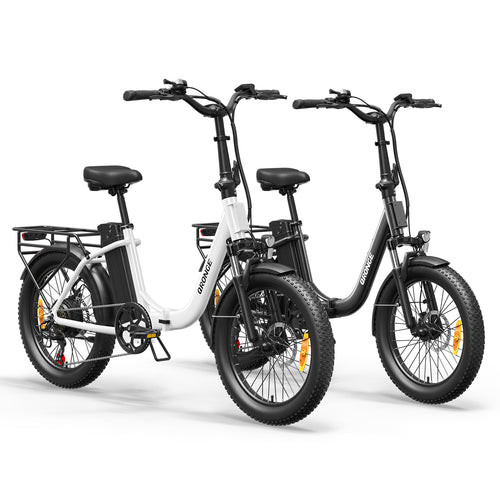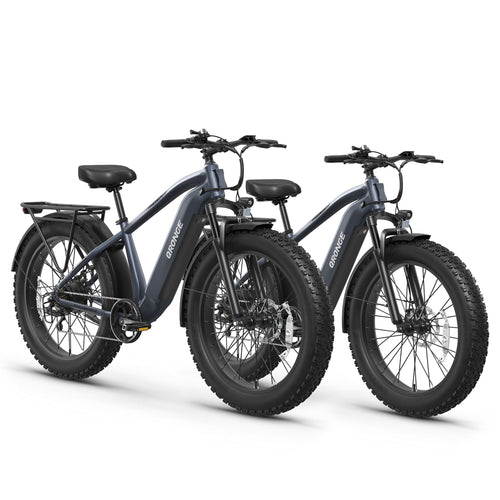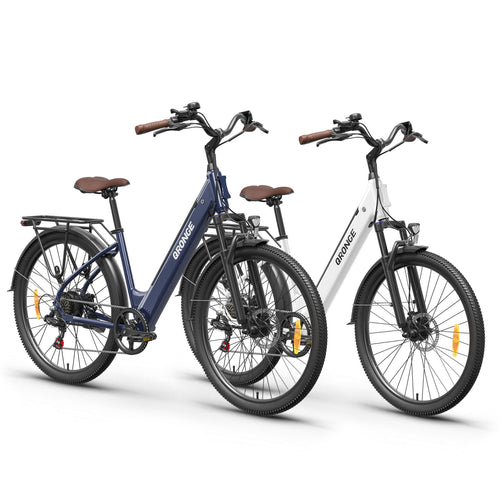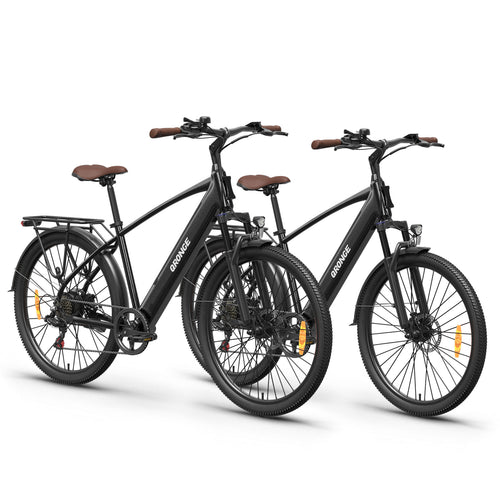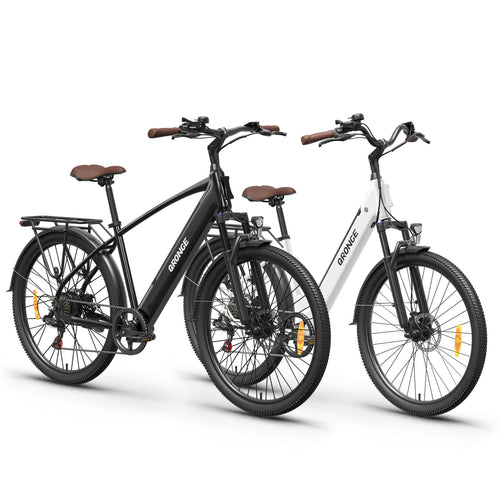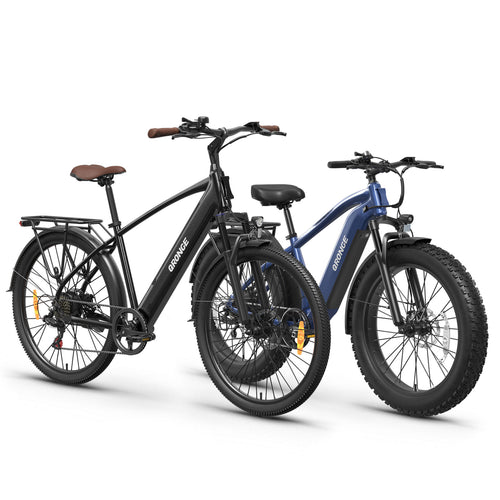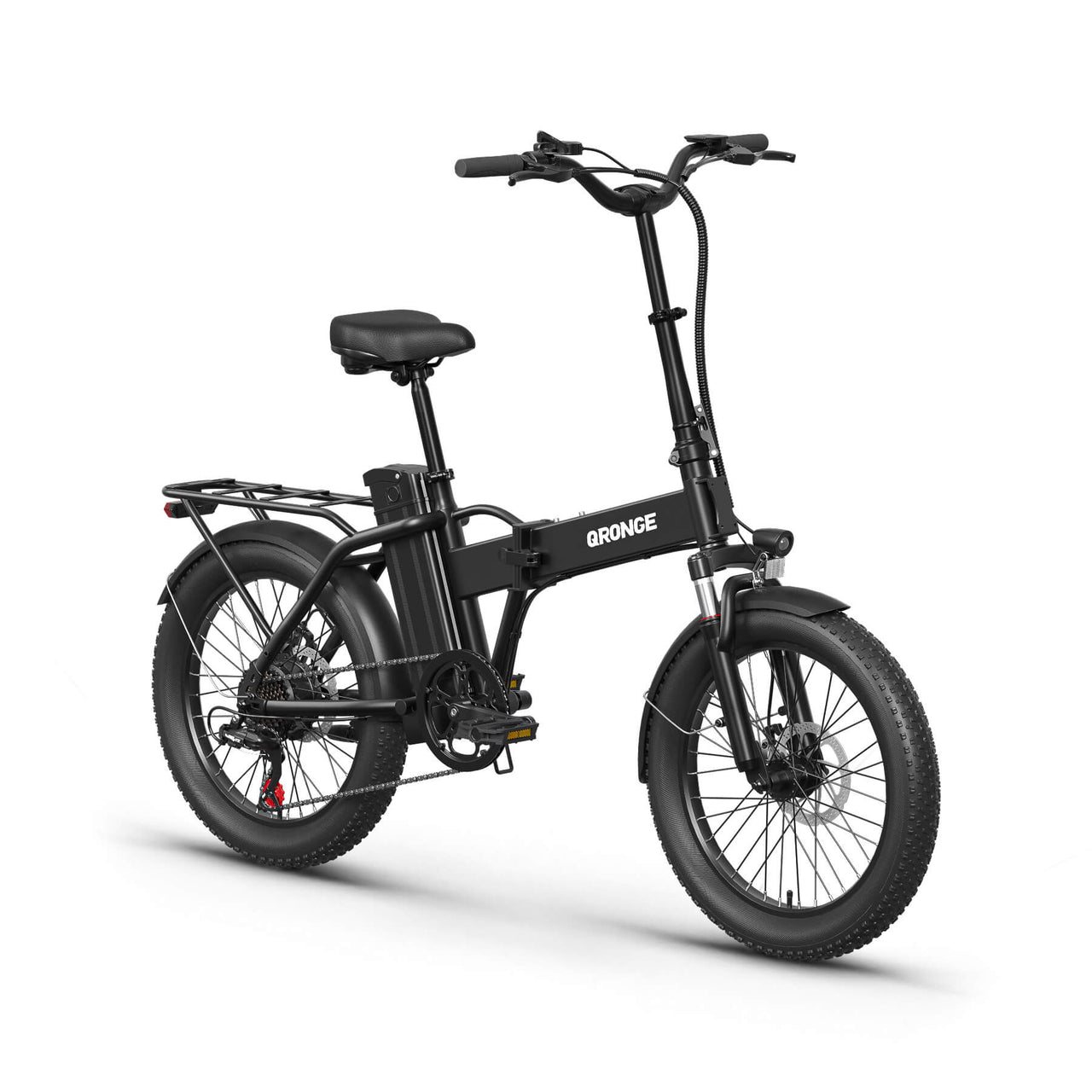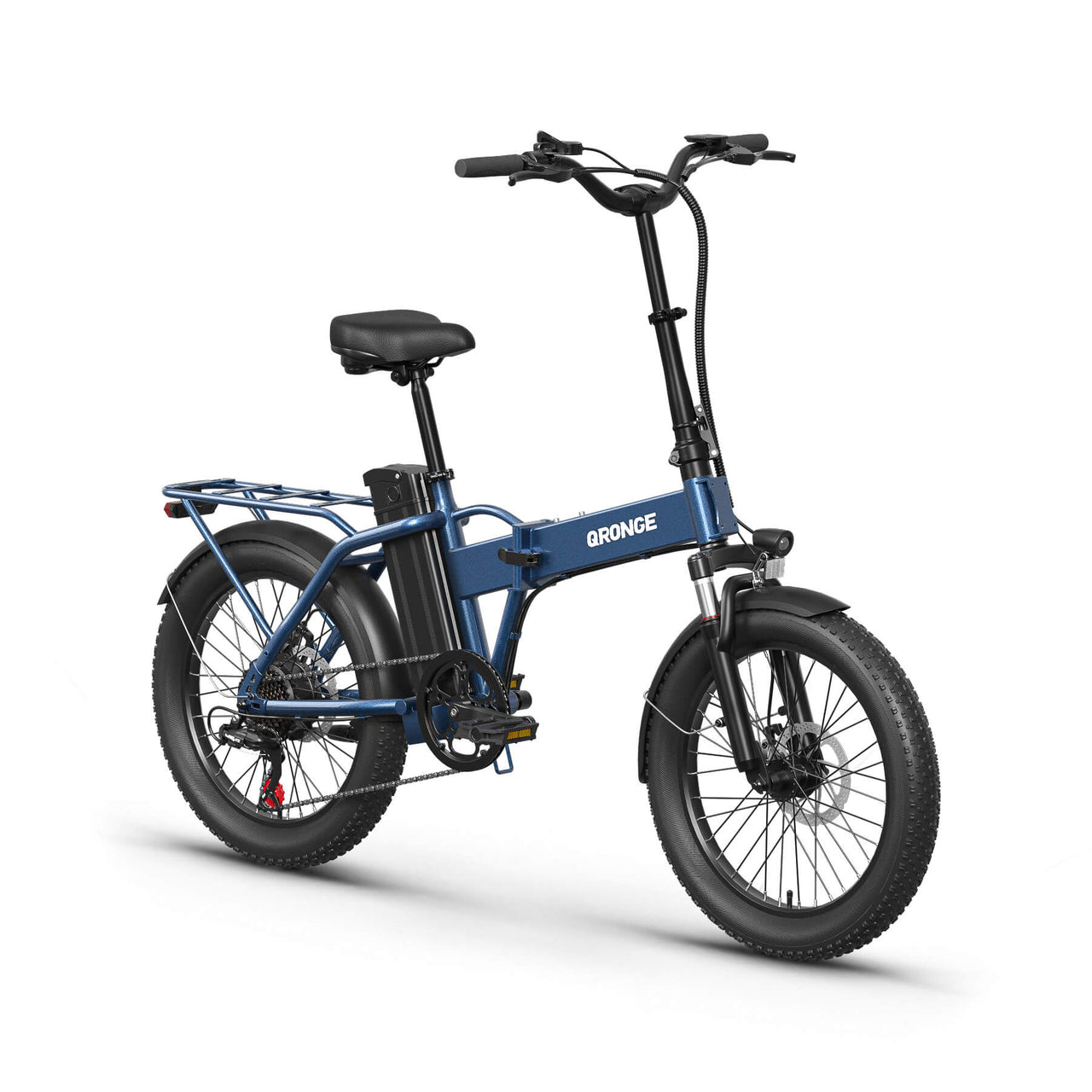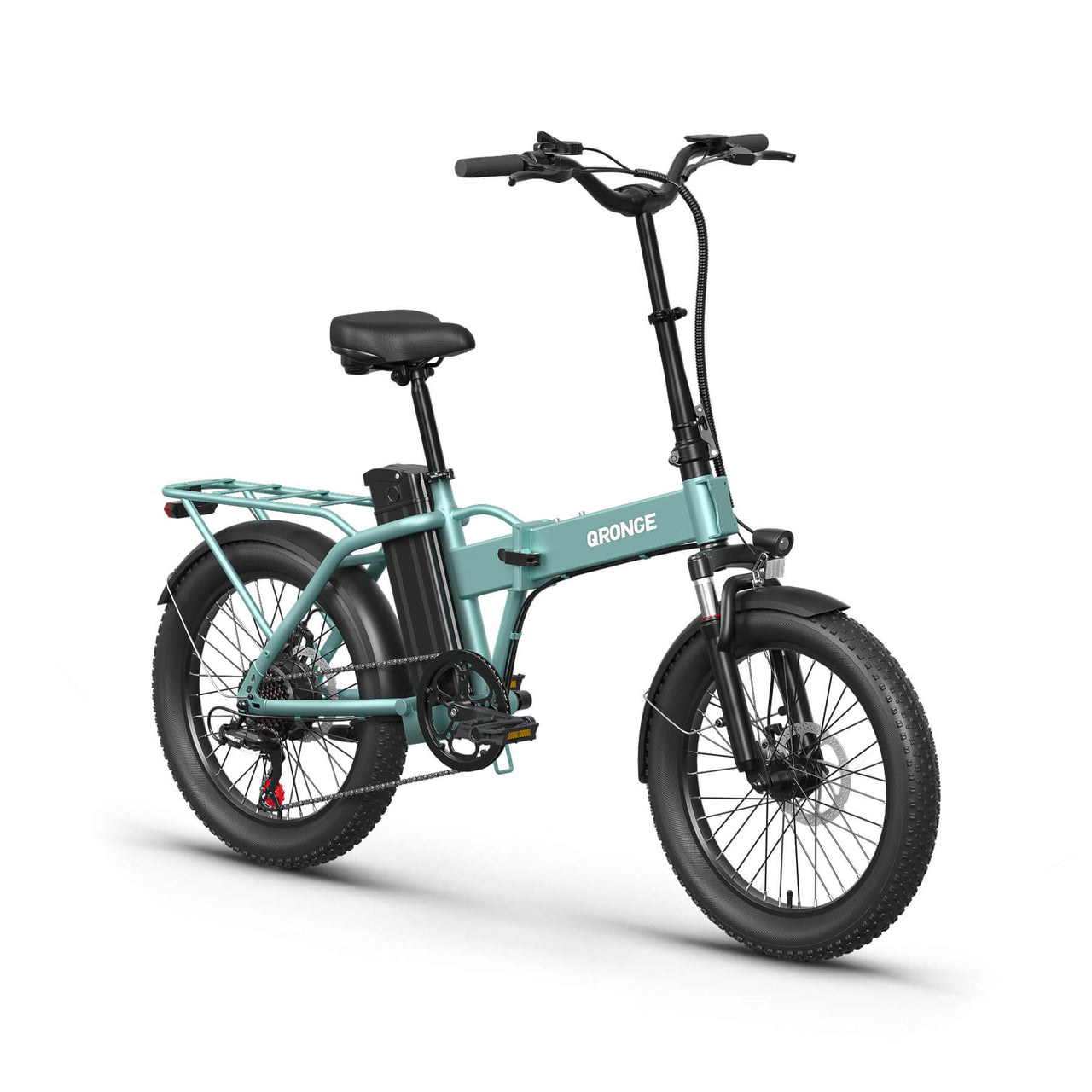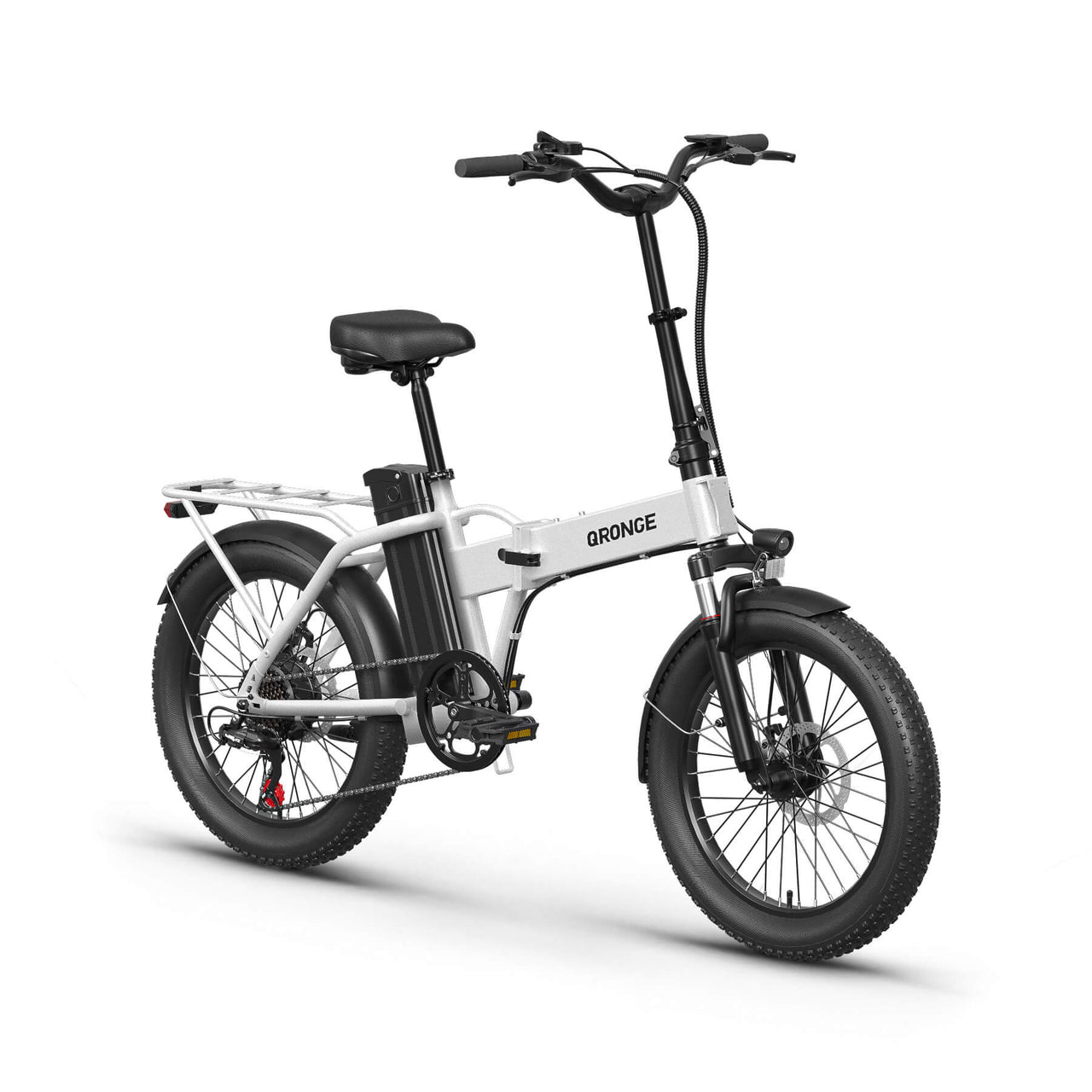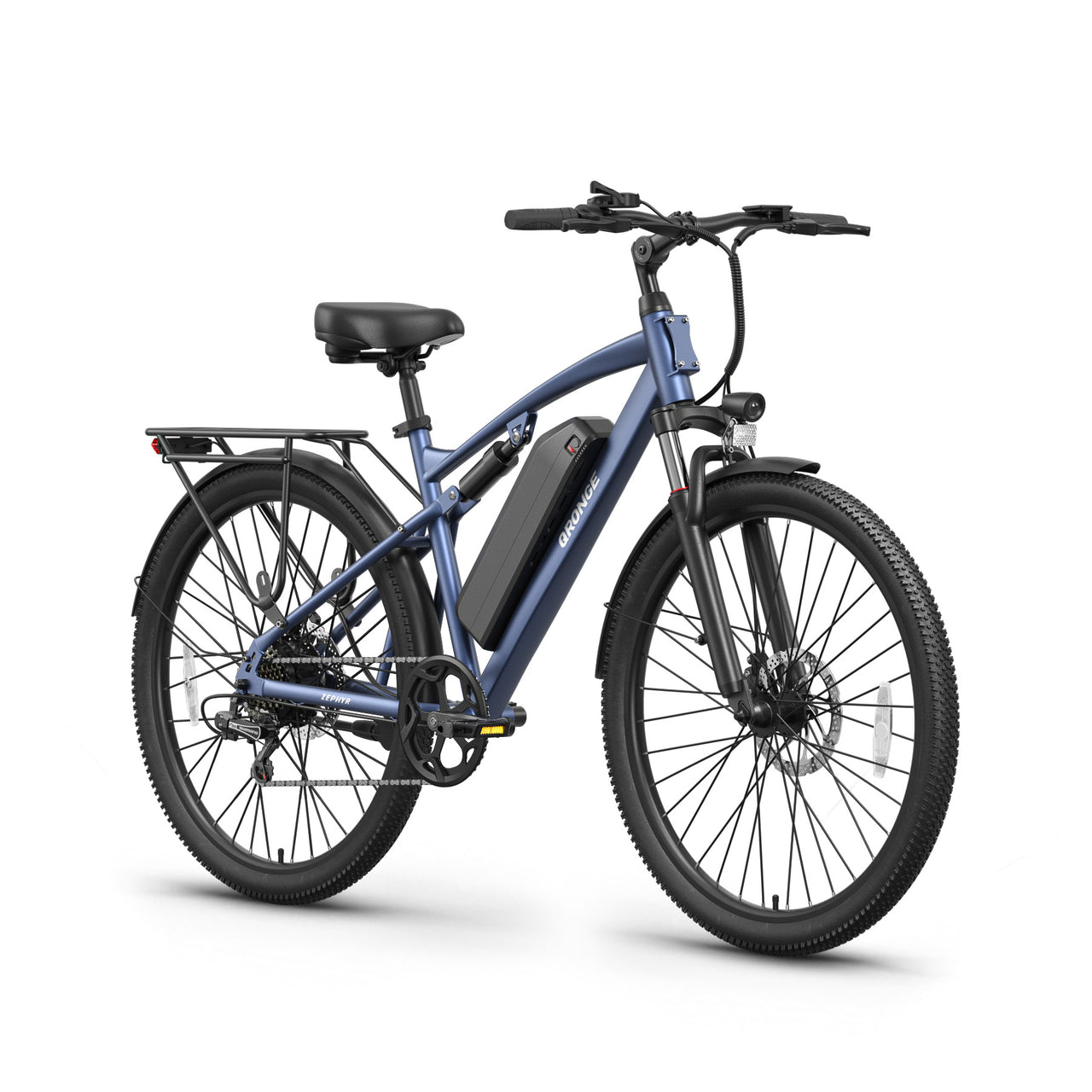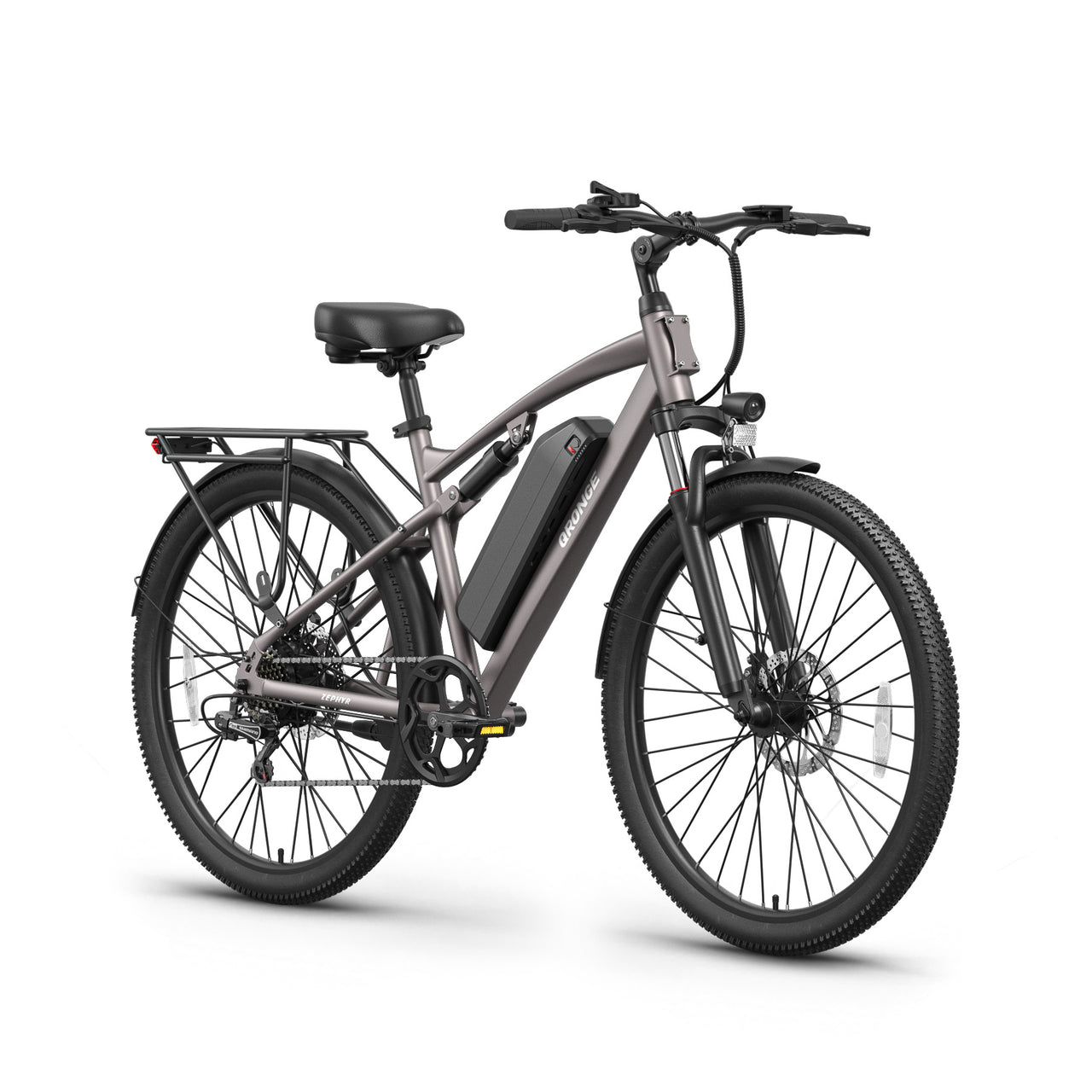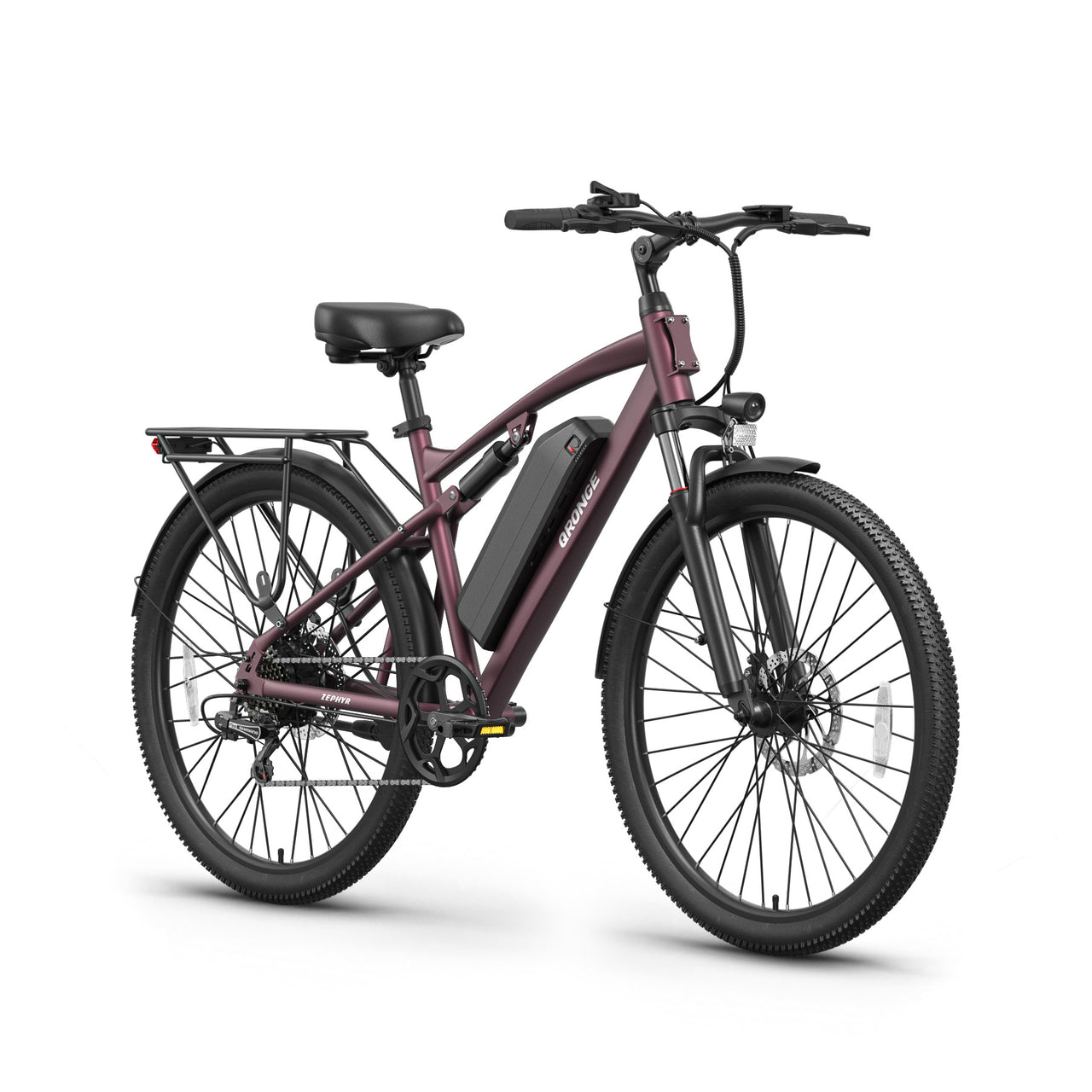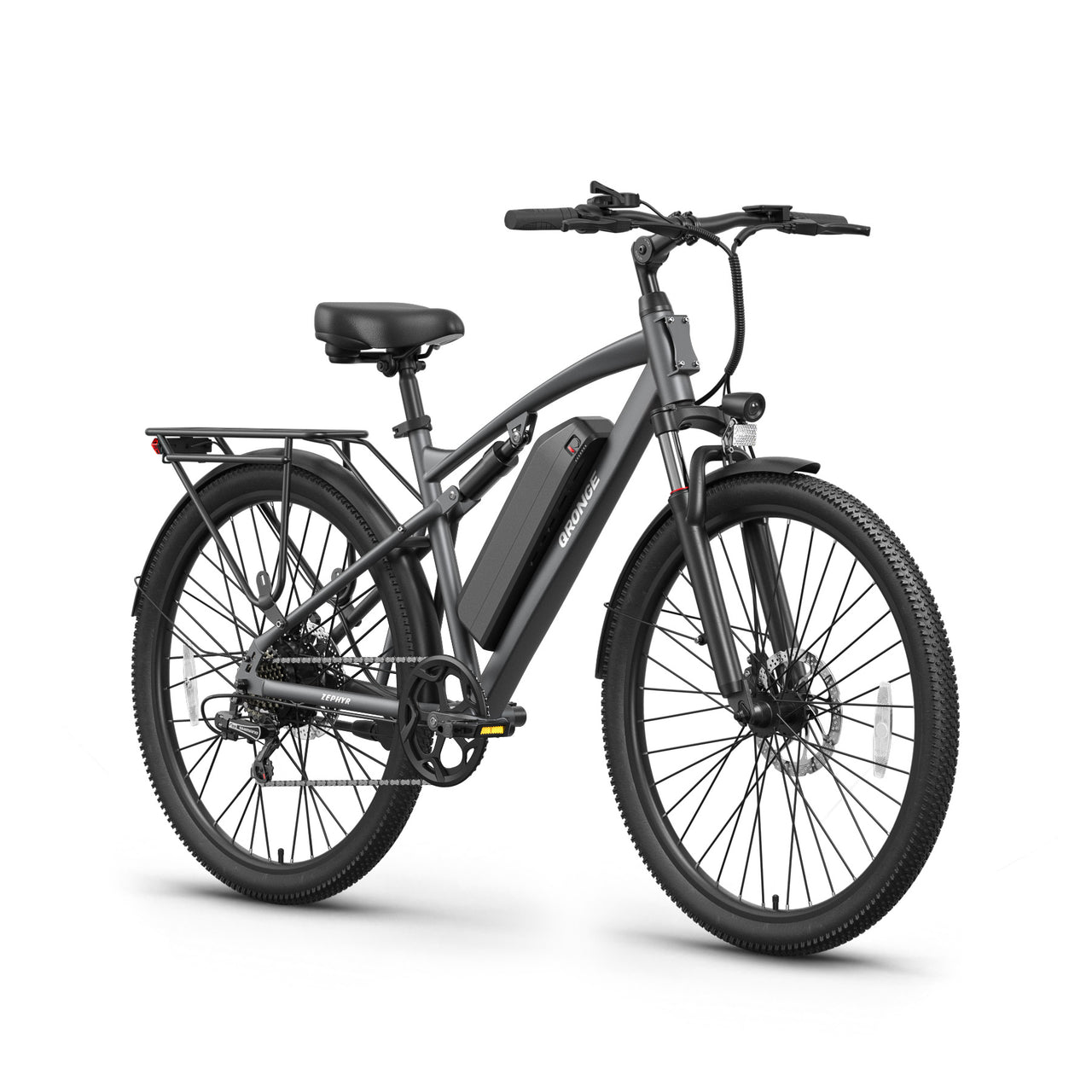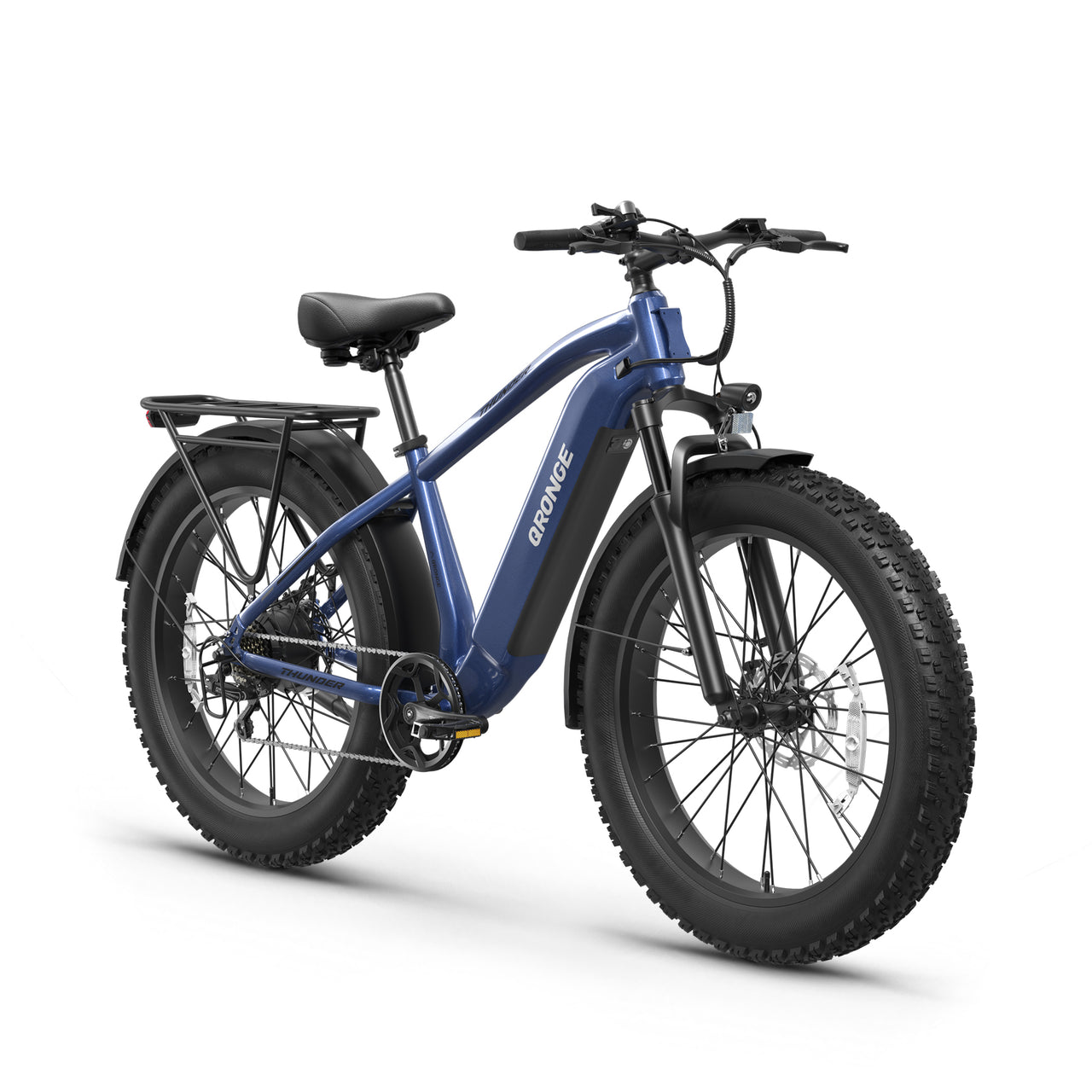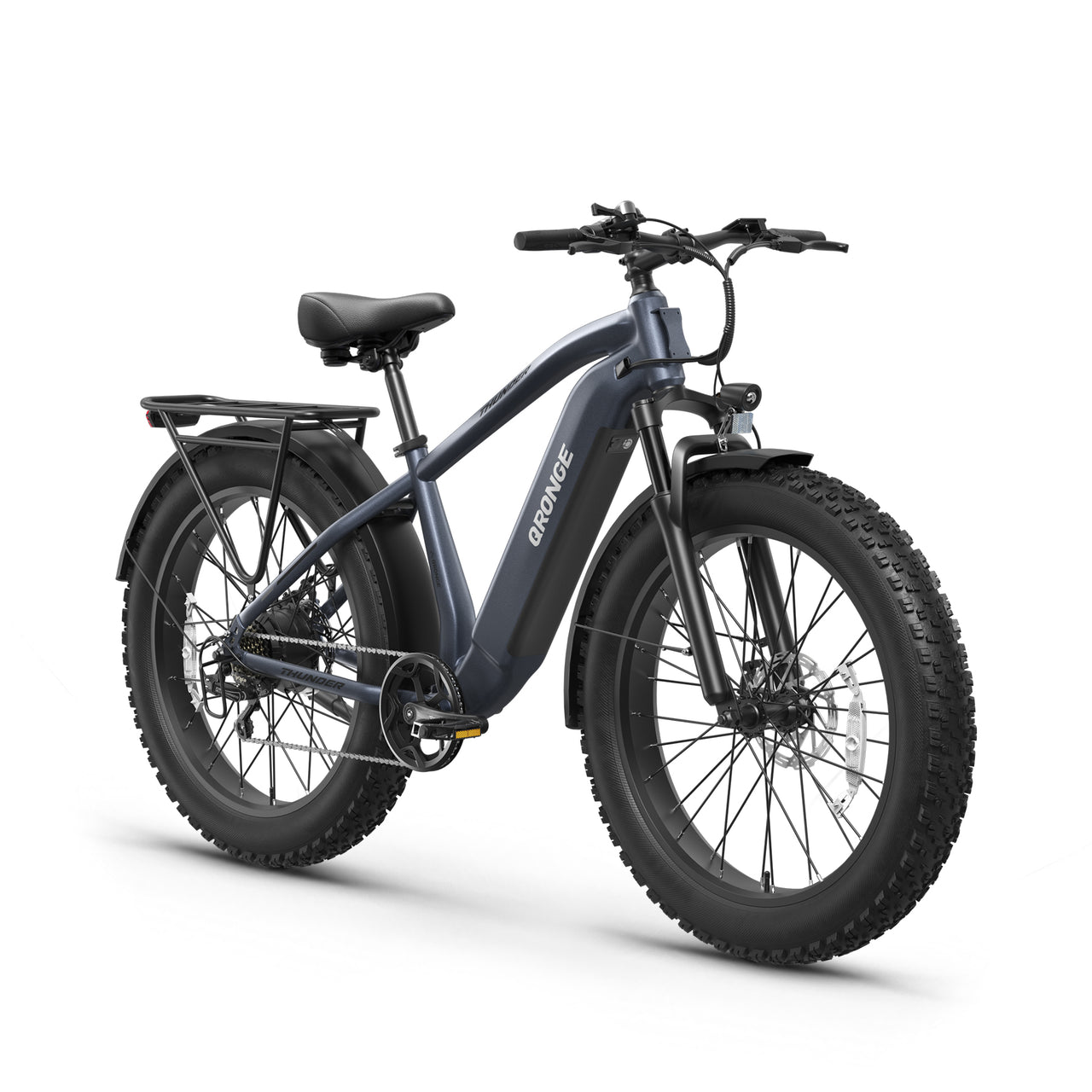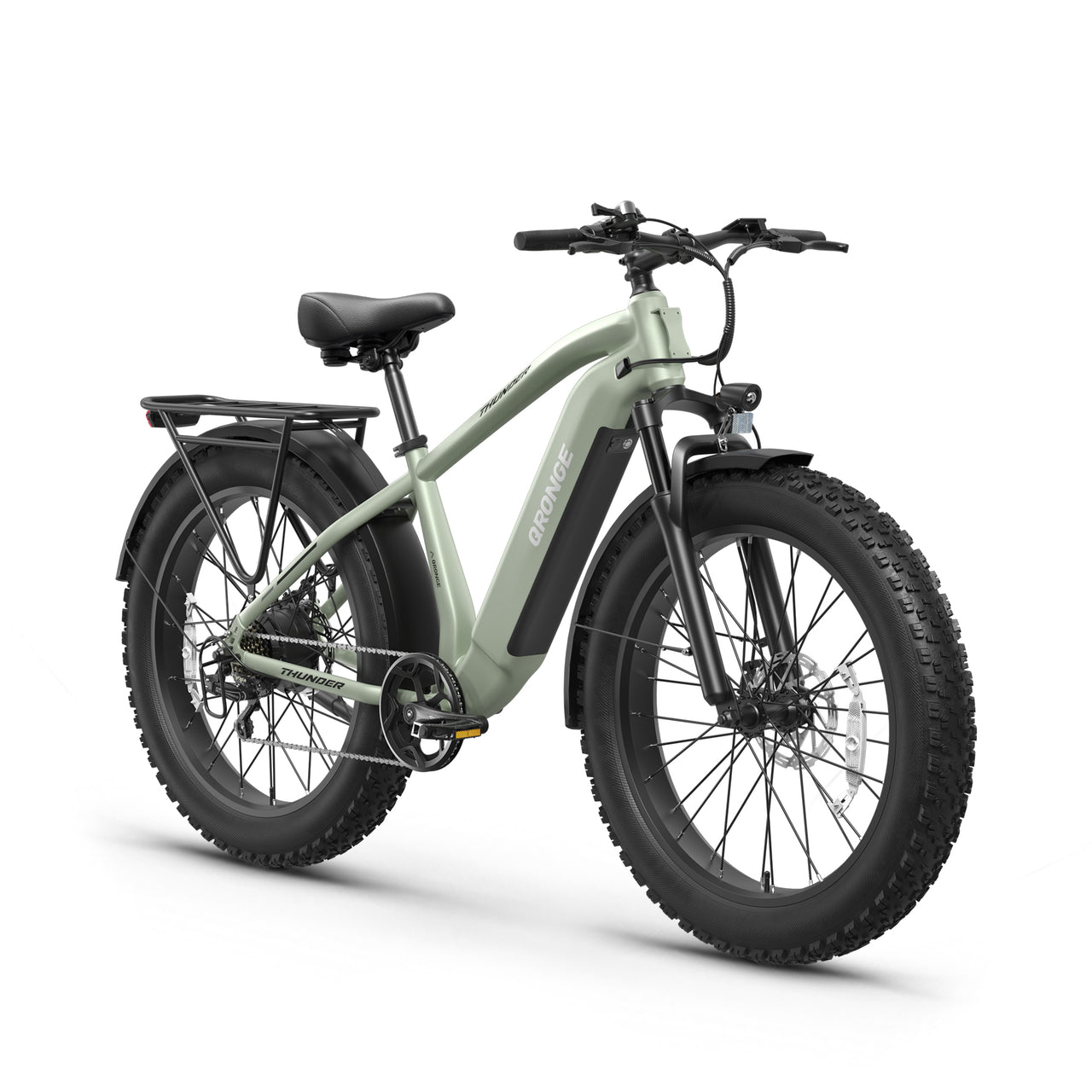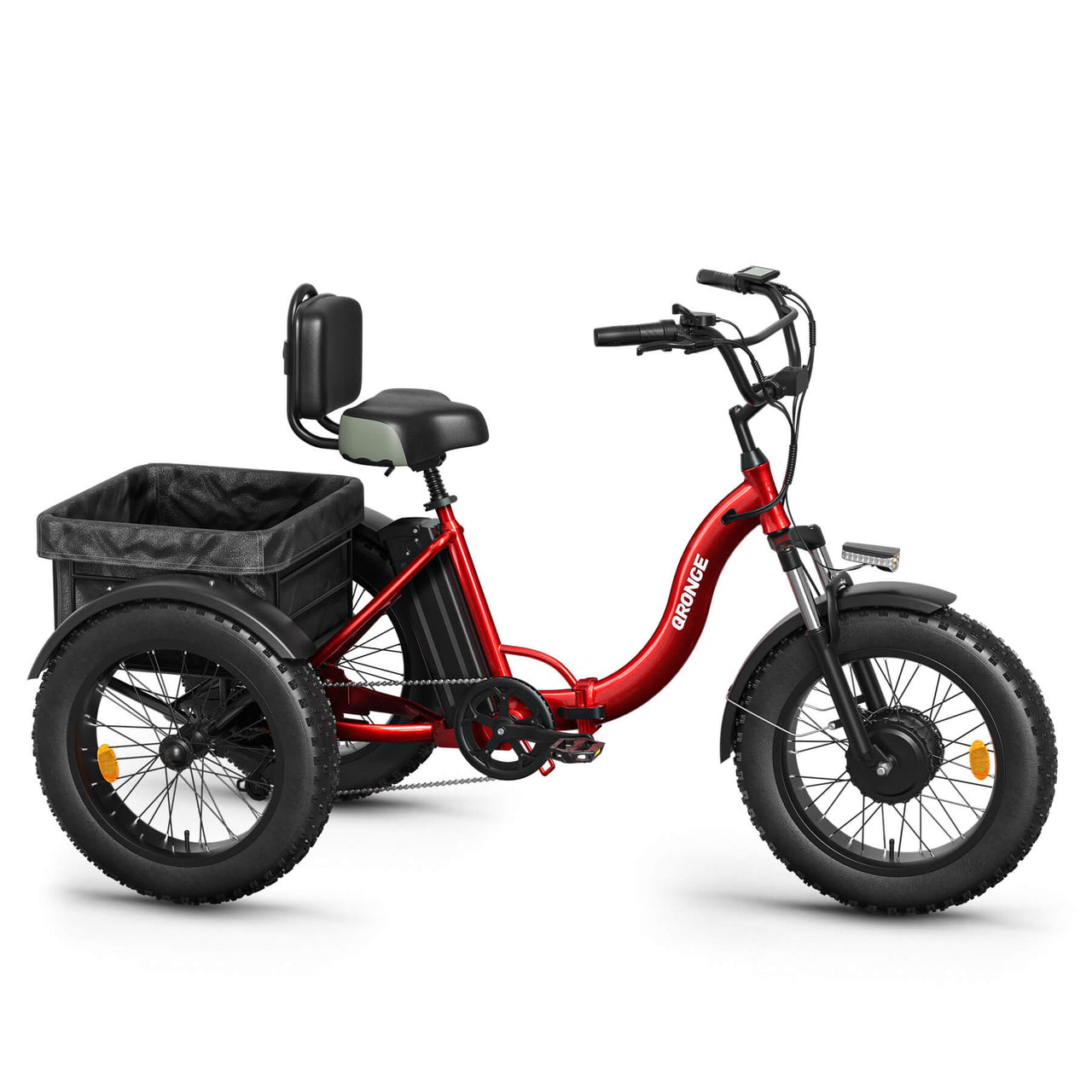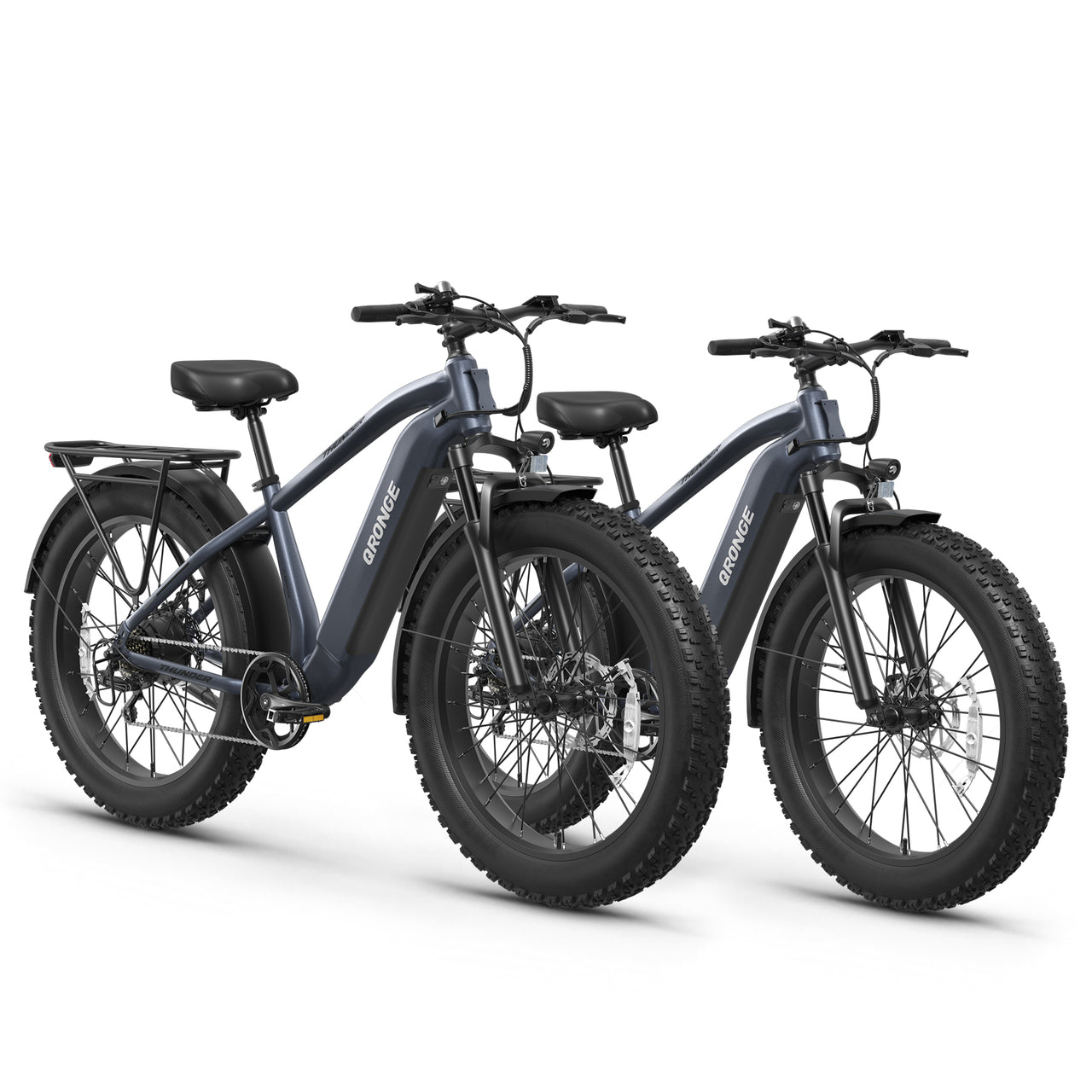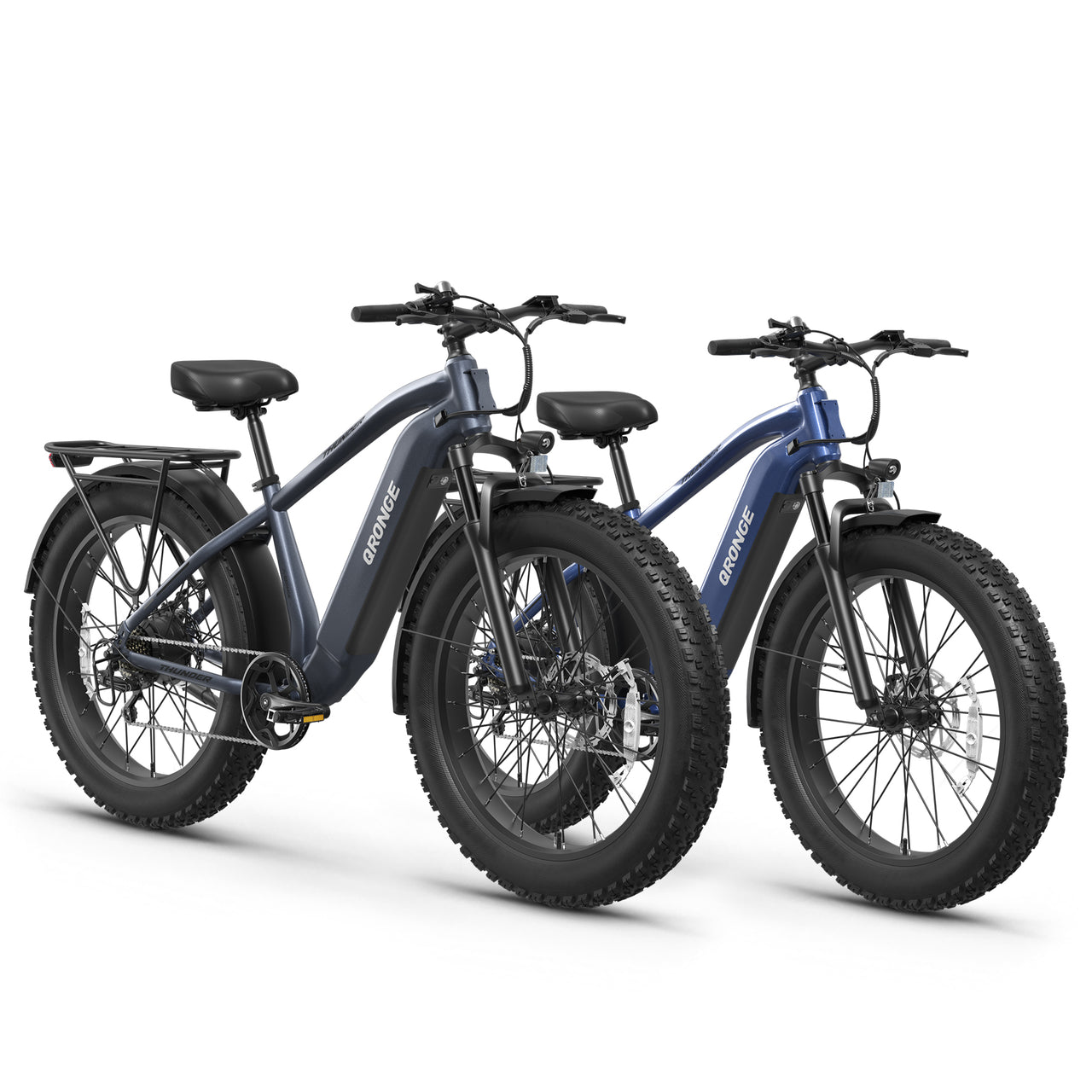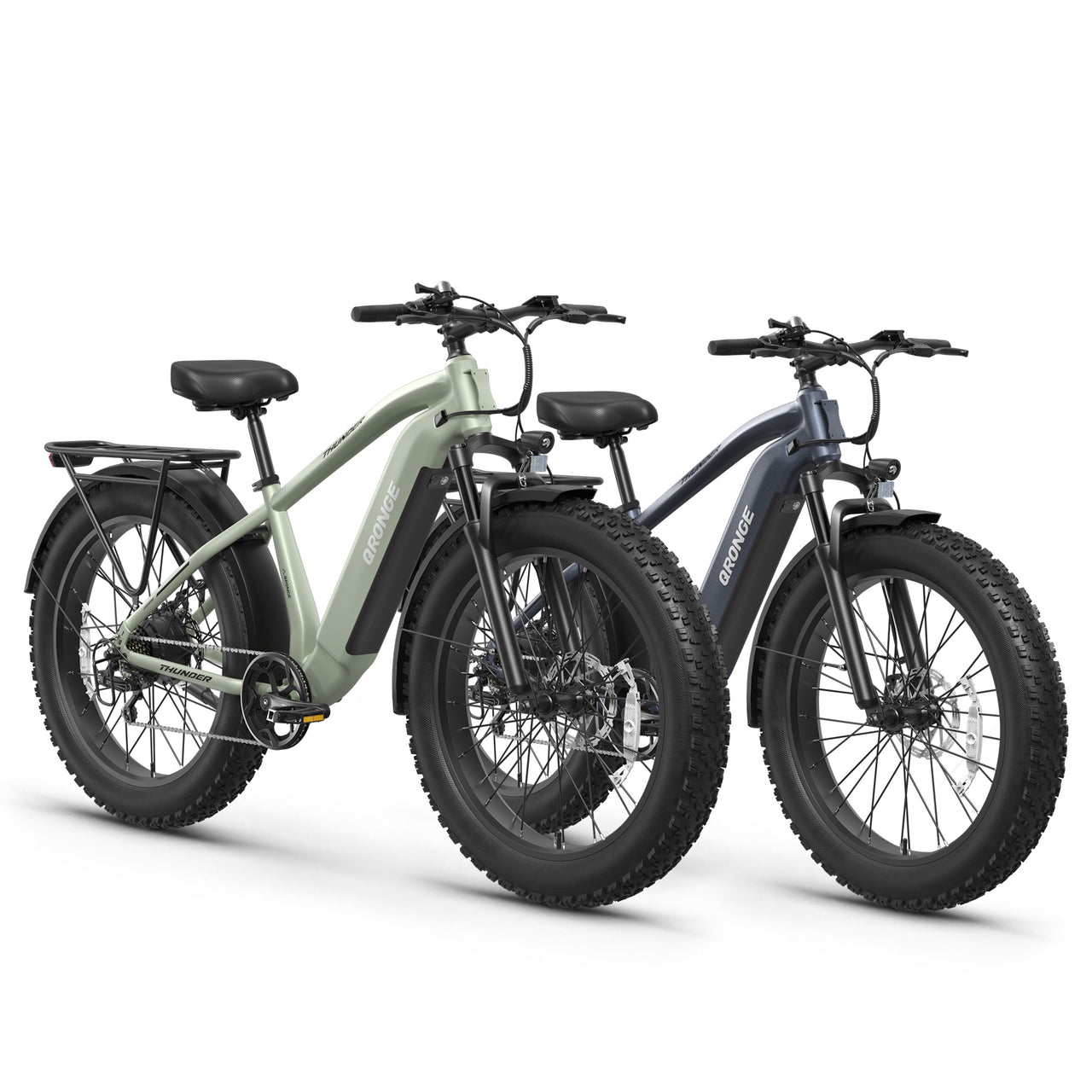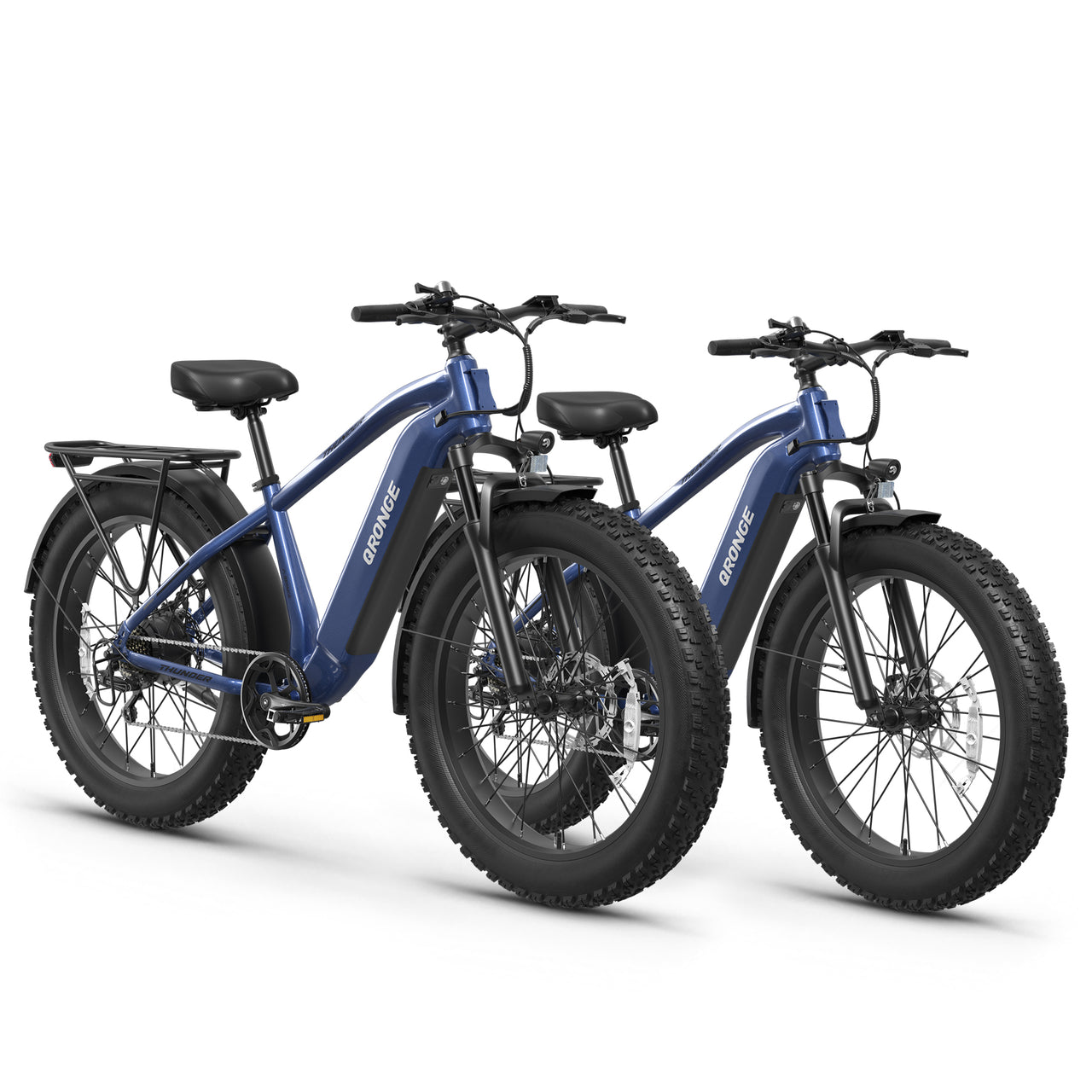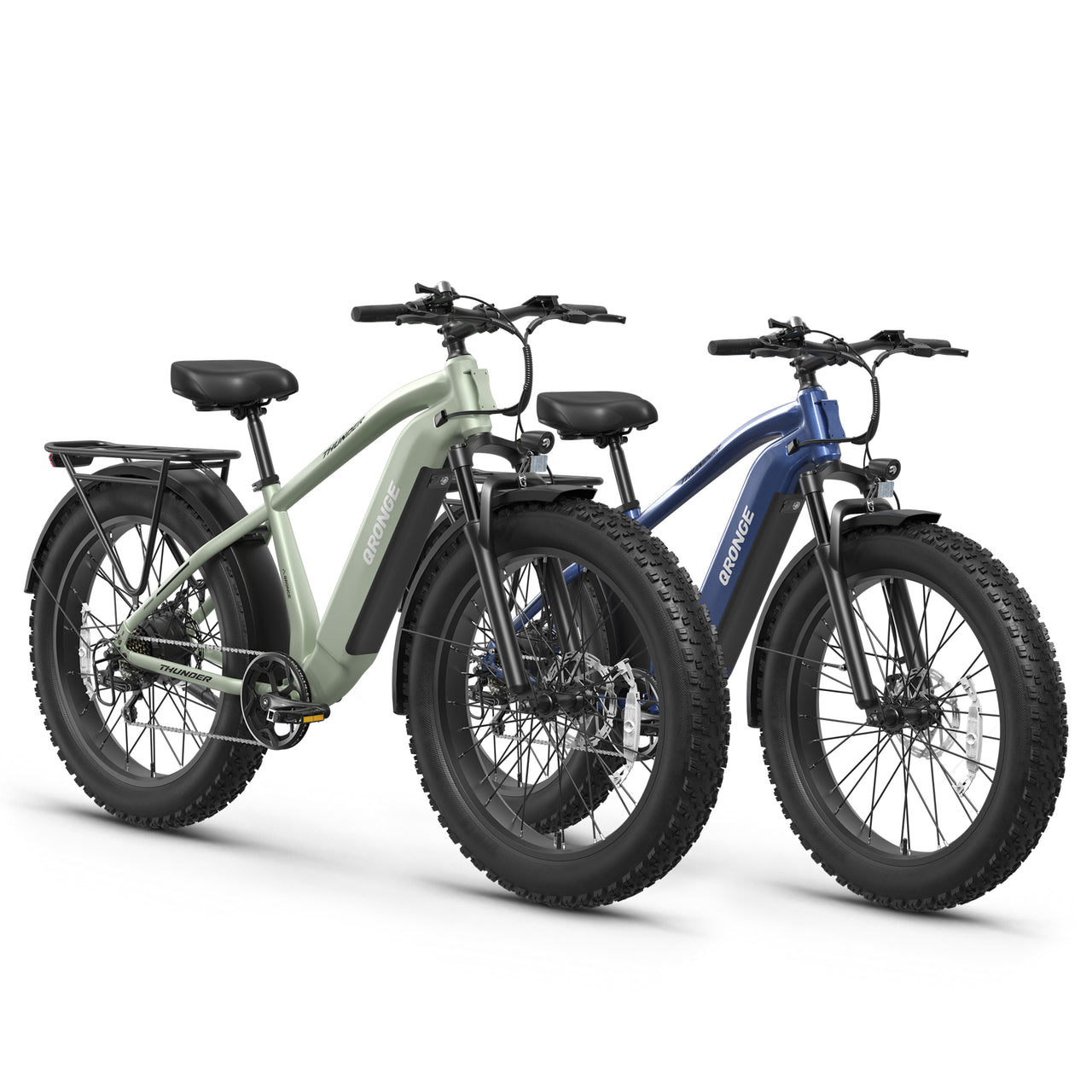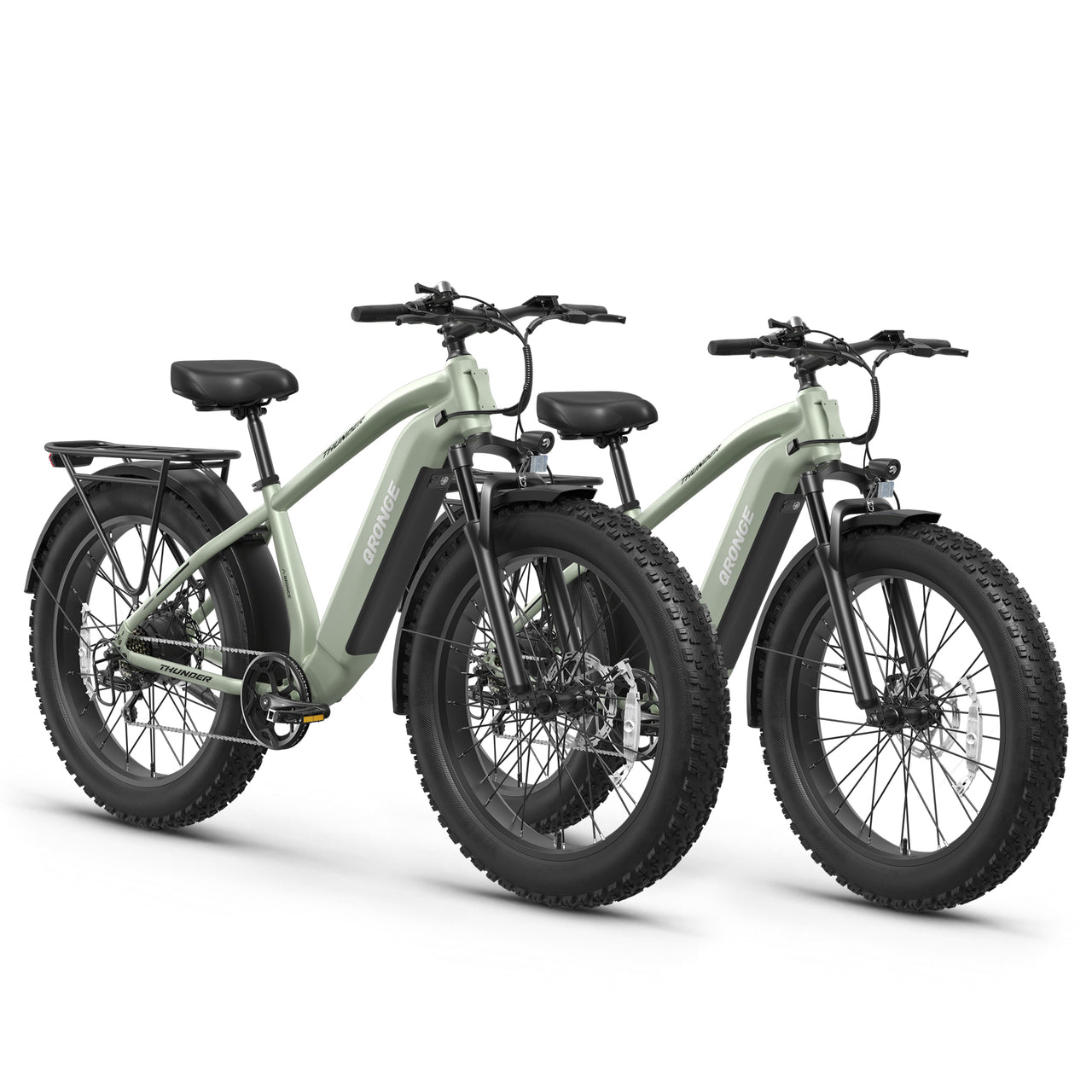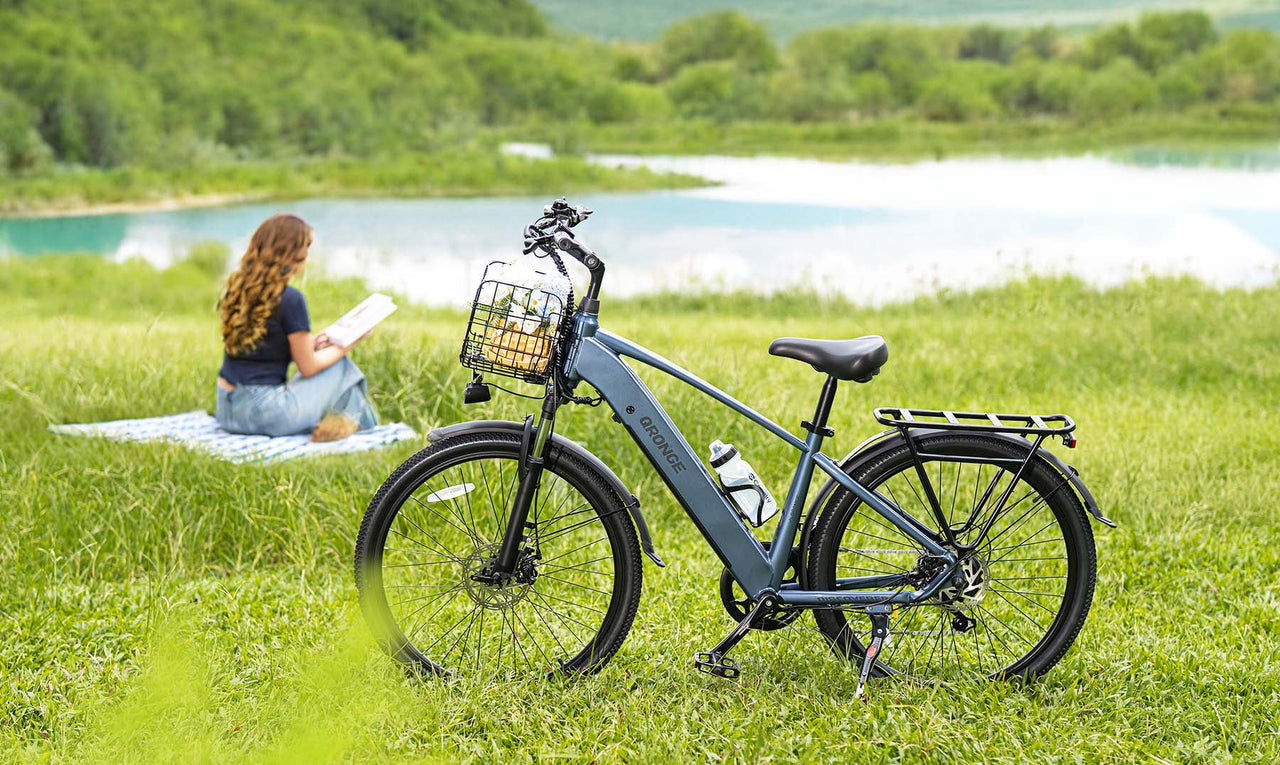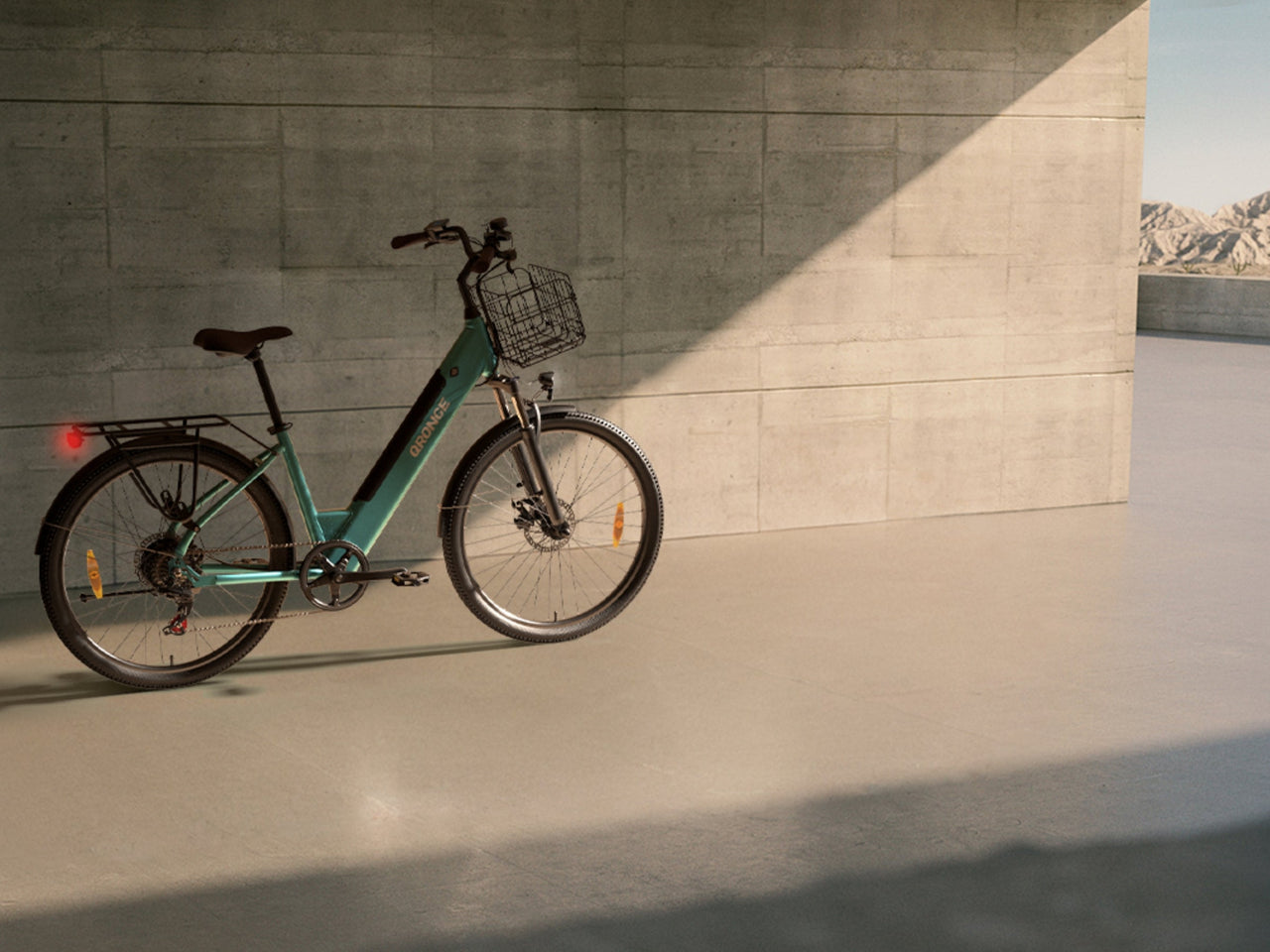Choosing the right tires for your e-bike isn’t just a technical decision—it’s about how you want to ride. From daily commutes to weekend adventures, tires shape your comfort, control, and confidence on the road.
In recent years, fat tires have become a popular upgrade for e-bike riders looking for better grip, smoother rides, and all-terrain capability. Compared to regular tires, they offer a very different riding experience—especially when paired with electric power.
In this guide, we’ll explore the key differences between fat tires and regular tires on e-bikes, and help you decide which option fits your riding style best.
What Are Fat Tires and Regular Tires?
At first glance, fat tires and regular tires may seem like simple size variations—but they’re designed for very different riding experiences.
Fat Tires
Fat tires are defined by their extra-wide construction, usually 3.8 inches or more in width. What sets them apart is their ability to “float” over unstable terrain—like snow, sand, or loose dirt—thanks to their larger surface area and low-pressure operation. This unique structure allows fat tires to provide maximum traction and cushioning, making them ideal for off-road riding and all-terrain e-bikes.
Think of fat tires as the SUVs of the cycling world: heavier, more robust, and ready for any condition.

Regular Tires
Regular tires, on the other hand, are typically between 1.75 and 2.5 inches wide, optimized for smooth surfaces like pavement and bike paths. They’re lighter, firmer, and roll with less resistance—delivering efficient speed and precise handling for everyday commuting or road cycling.
In contrast to fat tires, regular tires are more like sedans: efficient, agile, and best-suited for well-maintained roads.
Fat Tire Pros and Cons
Fat tires aren’t just wider—they represent a fundamentally different approach to cycling. Built for versatility and control, fat tires turn ordinary bikes into all-terrain machines capable of handling a wide range of surfaces and conditions. While they come with certain trade-offs, their benefits are undeniable for the right kind of rider.
Pros of Fat Tires
Exceptional Traction on Any Surface
The oversized footprint of fat tires gives them unmatched grip on snow, sand, mud, and gravel. Whether you're tackling loose terrain or riding through unpredictable conditions, fat tires provide a level of stability that standard tires simply can't match.
Enhanced Comfort and Shock Absorption
Thanks to their ability to run at low air pressure, fat tires naturally absorb bumps, vibrations, and surface irregularities. This translates to a smoother, more forgiving ride—especially important for long-distance riders or those with joint concerns.
Increased Stability and Control
Wider contact with the ground improves balance and reduces the risk of skidding or slipping. This makes fat tire bikes especially well-suited for beginners, heavier riders, or anyone seeking a safer ride on uneven ground.
Distinctive Appearance and Rugged Appeal
Beyond function, fat tires give bikes a bold, adventurous look. For many riders, it's not just about performance—it’s about making a visual statement and standing out on the trail or the street.
If you're shopping for the best electric bikes under $1000, brands like Qronge offer great value with models that balance performance, comfort, and affordability—making it easier to get started with your ride, no matter where you're headed.
Cons of Fat Tires
Heavier and More Physically Demanding (Without Assist)
Due to their size and thicker rubber, fat tires add weight to the bike and increase rolling resistance. On non-electric bikes, this can make pedaling more tiring, especially uphill or over long distances.
Higher Energy Consumption on E-Bikes
Fat tire e-bikes tend to consume more battery power than their regular-tire counterparts, as the motor has to work harder to maintain speed and handle the increased rolling resistance. However, this can be mitigated with a well-matched motor and battery system.
Slightly Higher Cost and Maintenance
Fat tires are generally more expensive to replace, and they may require more attention to pressure levels and wear—particularly if ridden across rough terrain regularly.
Fat tires aren’t for every rider—but for those who value comfort, confidence, and off-road capability, they offer a level of performance that standard tires simply can’t deliver.
If your rides often take you beyond smooth pavement, fat tires might not just be a better option—they might be the only one that truly fits.
Regular Tire Pros and Cons
Regular tires are the most common type found on traditional bicycles and commuter e-bikes. Designed for efficiency and speed on paved roads, they are lightweight and agile, making them ideal for riders whose journeys rarely stray from well-maintained surfaces.
While they serve most urban needs well, their limitations become clear once you leave smooth ground behind.
Pros of Regular Tires
Lightweight and Energy-Efficient
Regular tires are narrower and require less effort to roll, making them easier to pedal—especially on flat, paved roads. For non-electric bikes, this means more efficient energy use. For e-bikes, it translates to longer battery range.
Faster Acceleration and Easier Handling
Because of their lighter weight and reduced surface contact, regular tires respond quickly to rider input. This improves maneuverability and makes them ideal for stop-and-go city traffic, commuting, or recreational road rides.
Lower Cost and Easier Maintenance
Regular tires are more widely available and generally cost less to purchase and replace. Their higher pressure also makes them less prone to pinch flats on pavement, reducing routine maintenance for city riders.
Cons of Regular Tires
Limited Terrain Capability
Regular tires struggle on soft, uneven, or loose surfaces like sand, snow, or rocky trails. They’re not built for grip or suspension—riding over obstacles can feel harsh and unstable.
Less Comfort on Rough Roads
The higher pressure and narrower profile transmit more vibration to the rider, which can lead to fatigue or discomfort on bumpy paths, gravel shoulders, or poorly maintained roads.
Lower Traction and Stability in Poor Conditions
Wet roads, slippery surfaces, or light off-road trails can challenge regular tires. For riders who value year-round reliability or ride in mixed conditions, this can be a serious drawback.
Regular tires are a great match for riders focused on speed, simplicity, and efficiency—particularly in urban and suburban environments. But when the terrain changes or conditions become unpredictable, their limitations surface quickly.
They excel in familiar settings but may fall short when the road ahead is anything but ordinary.
Fat Tire vs Regular Tire: Side-by-Side Comparison
Choosing between fat tires and regular tires ultimately depends on your riding needs—but understanding the technical and practical differences makes the decision far easier. Below is a side-by-side comparison highlighting how these two tire types stack up in key areas:
|
Feature |
Fat Tires |
Regular Tires |
|
Width |
3.8" or wider |
1.75" – 2.5" |
|
Terrain |
Off-road, snow, sand, mixed trails |
Pavement, city roads, light trails |
|
Ride Comfort |
Very high (soft, stable) |
Moderate (firm, efficient) |
|
Speed & Efficiency |
Slower, more drag |
Faster, less effort |
|
Weight |
Heavier |
Lighter |
|
Battery Usage |
Higher (on e-bikes) |
Lower |
Fat tires prioritize grip, comfort, and terrain versatility, while regular tires focus on speed, efficiency, and urban convenience. The best choice depends on how and where you ride.
Which Tire Type Fits Your Riding Style?
Tires aren’t just components—they shape the entire feel of your ride. To choose between fat tires and regular tires, you first need to ask: How do you ride, and where do you ride most often? Matching your tire type to your riding style is the key to comfort, performance, and satisfaction.
City Commuter or Urban Rider? → Regular Tires
If your daily rides involve smooth pavement, bike lanes, and predictable routes, regular tires are the clear choice. They're lightweight, quick to accelerate, and require less effort—making them ideal for:
● Office commutes
● Campus rides
● Grocery runs or quick errands
● Weekend park loops
Their speed and efficiency shine in cities, and they’re easy to maintain and replace.
Off-Road Explorer or All-Season Rider? → Fat Tires
Do you love venturing onto gravel paths, forest trails, or snowy roads? Fat tires are made for that. Their wide profile and low-pressure setup give you grip and control in places regular tires simply can’t go. Perfect for:
● Trail riding or mountain exploration
● Snowy or sandy environments
● Rural or mixed-surface commuting
● Year-round riders facing unpredictable weather
You’ll feel more stable, more confident—and more ready for whatever the path throws your way.
Somewhere In Between? Consider Tire Width Variants
If your rides switch between city pavement and light trails, you might benefit from mid-width tires (2.5–3.0 inches). These offer a balance of speed and grip, and many modern hybrid e-bikes are designed around this “best of both worlds” approach.
How to Decide? Think Beyond the Bike
Ask yourself:
● Do I value effortless speed or comfort and control?
● Am I mostly riding in one type of environment, or do I explore a variety?
● Do I want a low-maintenance setup, or am I okay with adjusting pressure for performance?
Once you know your riding style, choosing the right tire becomes much easier—and your entire riding experience improves dramatically.
Conclusion
Choosing between a fat tire e-bike and a commuter e-bike comes down to how you ride—off-road adventure or smooth city cruising. Each has its strengths, but both deliver freedom and ease when powered by the right brand.
With versatile designs, solid performance, and great deals year-round, Qronge makes it easy to find the e-bike that fits your lifestyle.


